A nationwide mask mandate might be completely lifted in May, as daily case numbers continue to fall, the Central Epidemic Command Center (CECC) said yesterday.
As of yesterday, masks are no longer required for indoor venues except for healthcare centers, nursing facilities, public transportation venues and other designated places.
The mandate might be totally lifted in May, depending on the nation’s COVID-19 vaccination coverage and local infection situation, said Deputy Minister of Health and Welfare Victor Wang (王必勝), who heads the center.
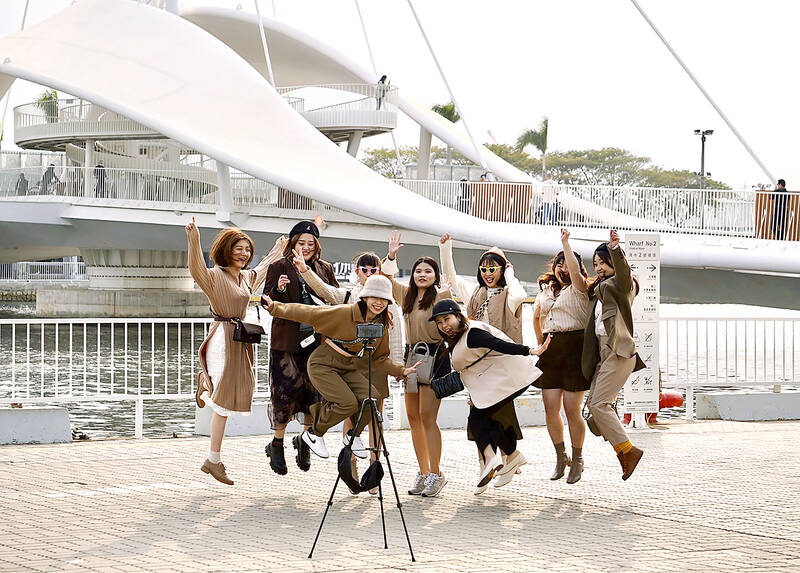
Photo: CNA
He said that 114,505 new local cases were reported last week, which is 17.3 percent lower than the previous week, and each of the three waves of the Omicron variant of SARS-CoV-2 since last year were smaller and shorter than the previous one.
The CECC yesterday reported 11,808 new local cases, 252 imported cases and 44 deaths.
With daily case numbers dropping, no major wave of infections is expected soon, although there would be slight fluctuations in daily cases, he said.
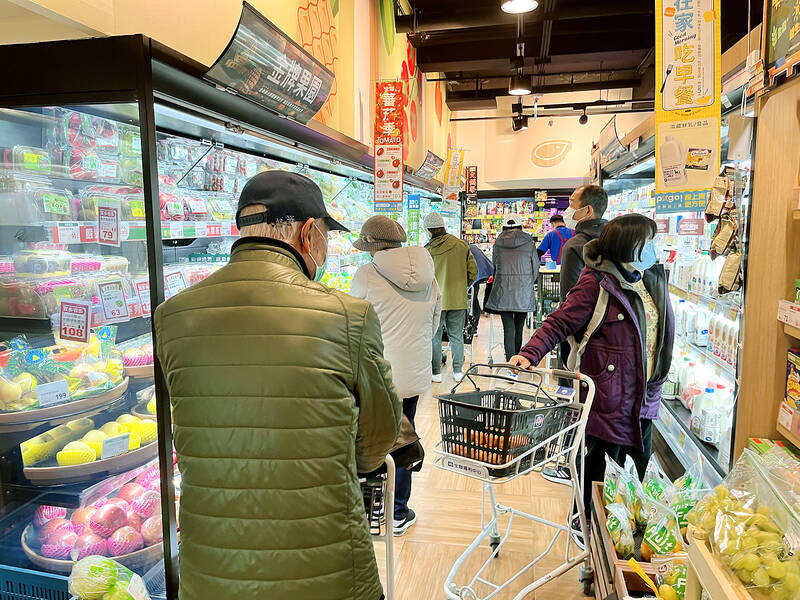
Photo: Tsai Ssu-pei, Taipei Times
As the full mask mandate has been in place for 811 days, many people might continue wearing masks for several months before they are used to not wearing them anymore, he said.
Regarding the current mask restrictions, Civil Aeronautics Administration Deputy Director Ho Shu-ping (何淑萍) said that masks are still required in trains, cable cars, buses, taxis, boats and aircraft, as well as inside “paid areas” or “controlled areas” of railway, subway, cable car or bus stations, airports and sea passenger terminals.
Centers for Disease Control (CDC) Director-General Chuang Jen-hsiang (莊人祥), who is the CECC’s spokesman, said that people who are practicing seven days of self-health disease prevention, including inbound travelers, are still required to wear a mask when going out, but the center would review that rule soon.
Starting from Wednesday next week, the government would no longer provide a free rapid test kit for international inbound travelers and close contacts living with a confirmed case, he said.
Inbound travelers who have symptoms of COVID-19 can report to airport or port quarantine officers to be tested, or they can purchase rapid test kits at pharmacies or retailers, he added.
Weekly genome sequencing data showed that 66 percent of local sequenced cases had the BA.2.75 Omicron subvariant, while 32 percent had BQ.1 and about 3 percent had BA.5, said CDC Deputy Director-General Philip Lo (羅一鈞), who is deputy head of the CECC’s medical response division.
The percentage of BQ.1 cases doubled from 15 percent in the previous week, Lo said, adding that neither it nor the BA.2.75 subvariant are expected to have a major effect on the local COVID-19 situation.
To better understand the nation’s natural infection rate of COVID-19, the CECC plans to test to 7,000 randomly selected blood samples from the Taiwan Blood Services Foundation between January and June to conduct a COVID-19 serum antibody survey — testing for the anti-nucleocapsid protein, he said.
Starting from this month, donors of the selected blood samples would receive a notification by mail or e-mail allowing them to opt out of the survey, he said, adding that they can also opt out by calling the CDC’s 1922 or 0800-001-922 hotlines, within two weeks of receiving the notification.
The blood samples would be anonymized for the survey, so the foundation and the CDC would not be able to link the samples with the donors, nor would the donors be notified of the results, Lo said.
An analysis of the study would be published after it is completed, he said.
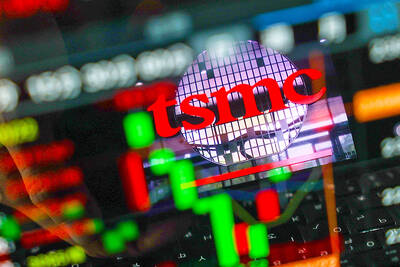
An alleged US government plan to encourage Taiwan Semiconductor Manufacturing Co (TSMC) to form a joint venture with Intel to boost US chipmaking would place the Taiwanese foundry giant in a more disadvantageous position than proposed tariffs on imported chips, a semiconductor expert said yesterday. If TSMC forms a joint venture with its US rival, it faces the risk of technology outflow, said Liu Pei-chen (劉佩真), a researcher at the Taiwan Industry Economics Database of the Taiwan Institute of Economic Research. A report by international financial services firm Baird said that Asia semiconductor supply chain talks suggest that the US government would
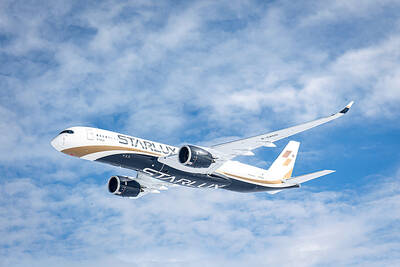
Starlux Airlines on Tuesday announced it is to launch new direct flights from Taiwan Taoyuan International Airport to Ontario, California, on June 2. The carrier said it plans to deploy the new-generation Airbus A350 on the Taipei-Ontario route. The Airbus A350 features a total of 306 seats, including four in first class, 26 in business class, 36 in premium economy and 240 in economy. According to Starlux’s initial schedule, four flights would run between Taoyuan and Ontario per week: Monday, Wednesday, Friday and Saturday. Flights are to depart from Taoyuan at 8:05pm and arrive in California at 5:05pm (local time), while return flights
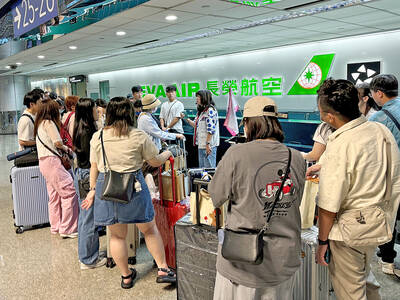
Nearly 800 Indian tourists are to arrive this week on an incentive tour organized by Indian company Asian Painted Ltd, making it the largest tour group from the South Asian nation to visit since the COVID-19 pandemic. The travelers are scheduled to arrive in six batches from Sunday to Feb. 25 for five-day tours, the Tourism Administration said yesterday. The tour would take the travelers, most of whom are visiting Taiwan for the first time, to several tourist sites in Taipei and Yilan County, including tea houses in Taipei’s Maokong (貓空), Dadaocheng (大稻埕) and Ximending (西門町) areas. They would also visit
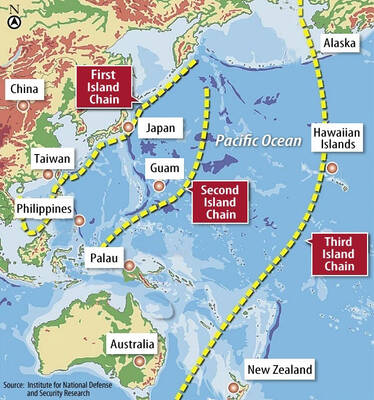
LITTORAL REGIMENTS: The US Marine Corps is transitioning to an ‘island hopping’ strategy to counterattack Beijing’s area denial strategy The US Marine Corps (USMC) has introduced new anti-drone systems to bolster air defense in the Pacific island chain amid growing Chinese military influence in the region, The Telegraph reported on Sunday. The new Marine Air Defense Integrated System (MADIS) Mk 1 is being developed to counter “the growing menace of unmanned aerial systems,” it cited the Marine Corps as saying. China has constructed a powerful defense mechanism in the Pacific Ocean west of the first island chain by deploying weapons such as rockets, submarines and anti-ship missiles — which is part of its anti-access/area denial (A2/AD) strategy against adversaries — the